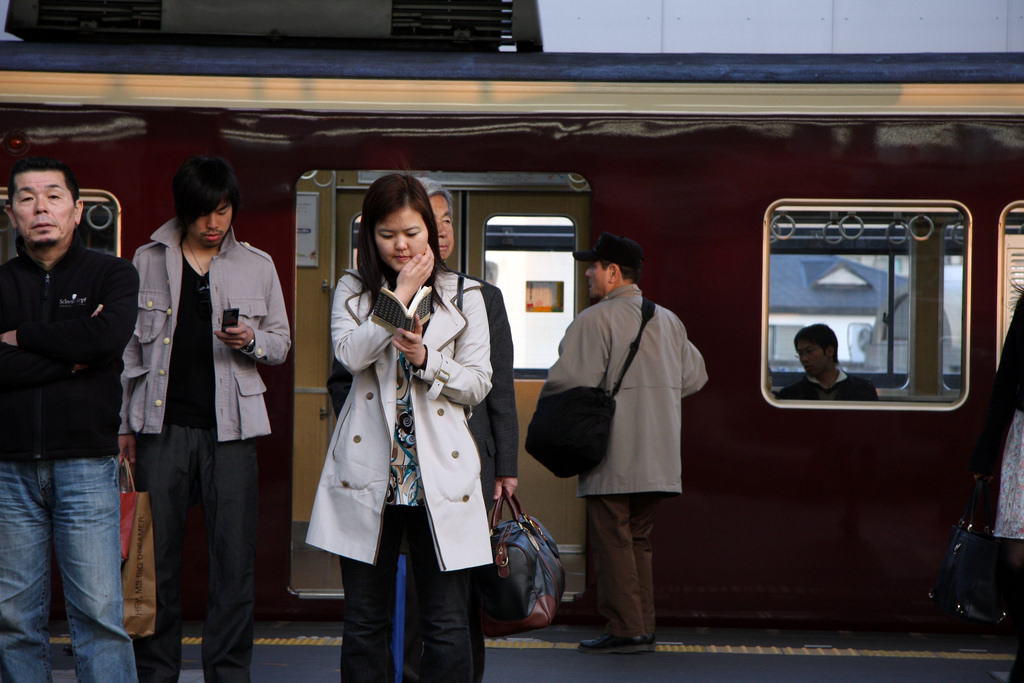Today, the electoral college meets to make one of the biggest decisions in American history, and while it is largely a pro-forma event, some liberals are waiting for a last-minute reprieve from the inevitable. While you wait, here’s some reading.
‘Election: On Brain Trauma, Queerness, and Digging for Old Coke Bottles in Cleveland‘ (Rebekah Frumkin for Catapult)
This thoughtful personal essay weaves together experiences of queerness, family, love, culture, and the election — how a single night can bring someone hard up against a sharp reality that changes everything.
But we were confident we’d wake up on November 9th into a business-as-usual capitalist democracy, address the grievances we’d always had via protest and petition, advocate as best we could for ourselves and other marginalized Americans. We’d just met each other, and it wouldn’t make sense for things to turn out any differently: She worked a design job she loved, I’d just sold my novel, Finn’s brain was finally healing. Things were on an upswing. Things would have to stay on a permanent upswing—to believe otherwise was to give in to darkness and stasis, self-hatred and doubt. It was getting easier to be us. It was getting easier for everyone to be themselves.
‘Can Post-Apocalyptic Art Be a Force for Social Change?‘ (Matt King for Pacific Standard)
Hauntingly beautiful photography and other art featuring real-world post-apocalyptic landscapes like abandoned power plants and houses being swallowed up by the sea is stunning, but does it carry a deeper message, and purpose?
Post-apocalyptic imagery’s core subjects — deindustrialization, over-industrialization, unemployment, pollution, climate change — aren’t going away anytime soon. Global warming is poised to reprogram entire geographic climates in the coming decades, and superstorms will likely ravage more coastal towns and cities. Globalized networks of trade and migration and war will continue to displace more people, feeding into renewed feelings of tribalism that are surging across both developed and developing countries. The quickening pace at which these unprecedented changes are rattling the globe may be reason enough for artists to continue documenting the chaos — which is often far away and hard to discern — confronting the carnage of what we are leaving behind, bearing witness, no matter what message audiences take away from the image.
‘The Sad, Timely Return of The Killing of America‘ (Tim Grierson for The New Republic)
One of the most seminal documentaries about gun violence in the United States is one that many people haven’t heard of, but now, it’s resurgent, as every bit as valid and powerful as it was in 1982.
Since its release, The Killing of America has surfaced in different, condensed versions and Renan laments that his original cut, which he says featured more ‘elegiac’ passages that helped break up the film’s darkness, has mostly been unseen in recent years. Even then, though, Renan admits that The Killing of America, in any incarnation, ‘is a little bit of a sledgehammer. [Schrader and Yamamoto] did not want me, in any way, to mediate or make it a do-gooder thing.’
‘The graffiti kids: How an act of teenage rebellion sparked the Syrian war‘ (Mark MacKinnon for the Globe and Mail)
This is an absolutely fascinating, in-depth longread on the origins of the Syrian war, the constellation of factors that surrounded it, the players, and the larger context across the Middle East.
Naief’s graffiti has had an effect on our world similar to the assassin’s bullet fired in Sarajevo at the outbreak of the First World War. Without Naief’s act of teenage impetuousness – and the Assad regime’s violent reaction to it – would the extremist caliphate have been declared? Would the refugee crisis be on the scale it is now? Would the United Kingdom – spurred by campaign posters of streams of refugees heading north – have voted to leave the European Union? Would the anti-immigrant message of Donald Trump – who has spoken, without evidence, of possible “Trojan horses” among the Syrian refugees accepted into the United States – have resonated quite so deeply with the American electorate?
‘Life in Obamacare’s Dead Zone‘ (Inara Verzemnieks
for the New York Times Magazine)
With reforms to the Affordable Care Act on the horizon, there’s another important conversation that few people have been having: A frank look at the ‘dead zones’ of existing ACA coverage.
A result was that the residents with the lowest incomes in those 19 states were now caught between two nonoptions: They made too much to qualify for Medicaid, or didn’t qualify at all, but they also made too little for publicly subsidized insurance on the exchanges, their income not high enough to trigger the refundable tax credits and cost-sharing that could make the possibility remotely affordable to someone making just a few dollars above the federal poverty level.
If you enjoy our work, please consider supporting us with a one time or recurring donation. We believe in paying writers, and we rely on our readers to help us continue serving up interesting, dynamic, and engaging commentary every weekday. To make sure you don’t miss any of that commentary, you can subscribe to our newsletter below — and if you’re interested in writing for us, check out our contributor guidelines.
Photo: Chris Gladis/Creative Commons

